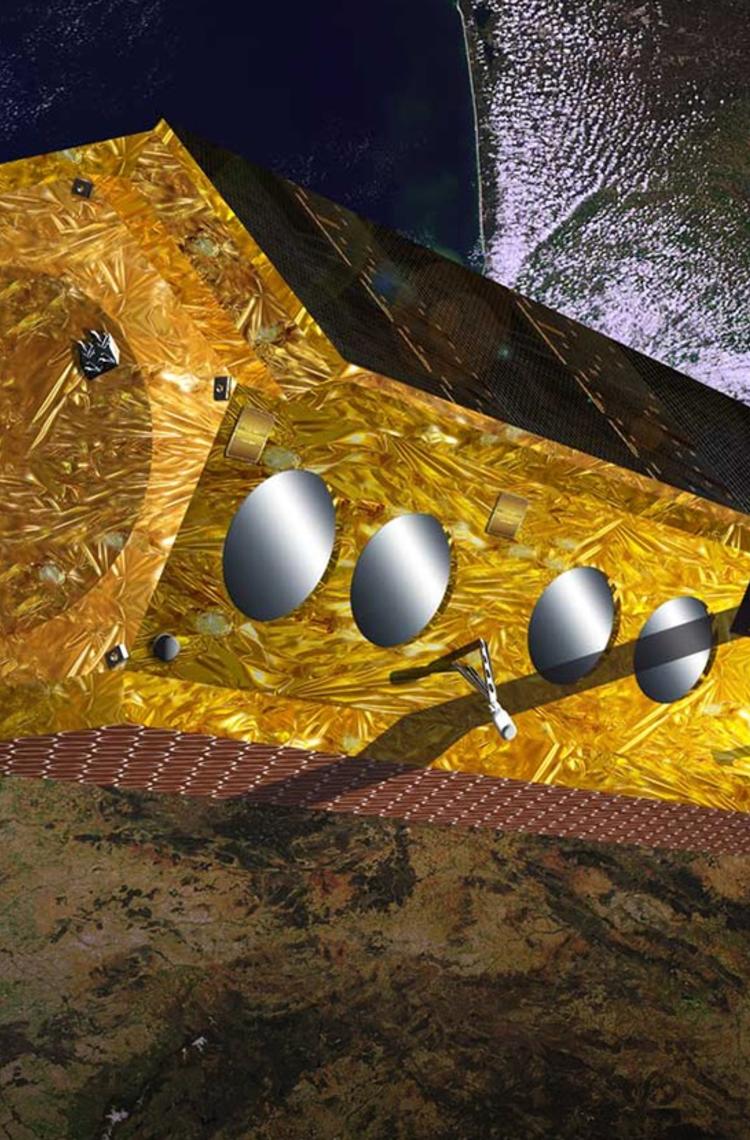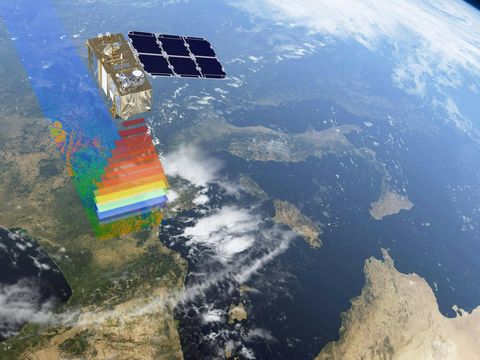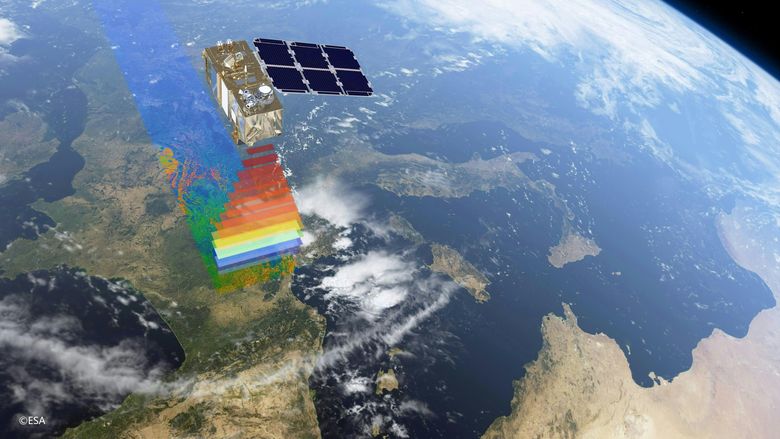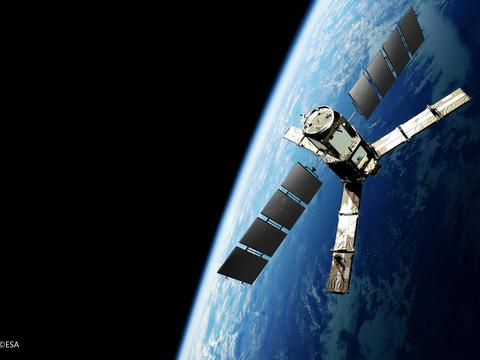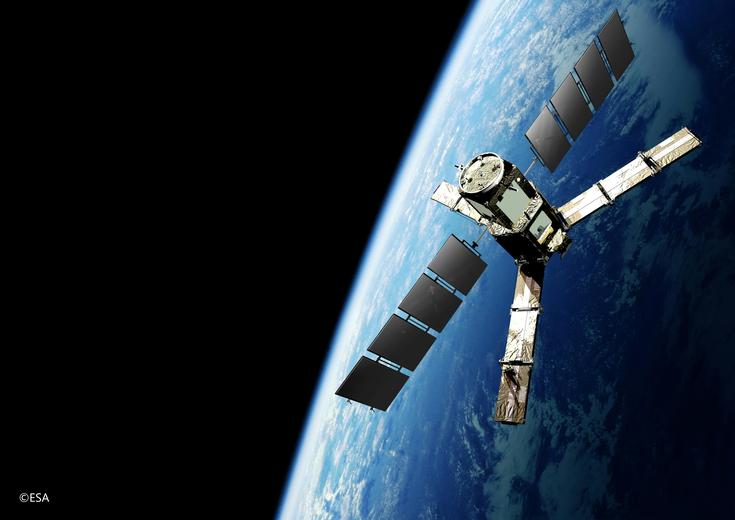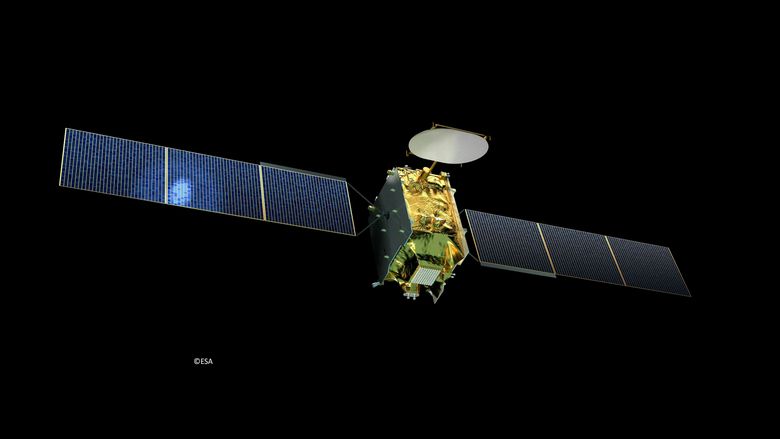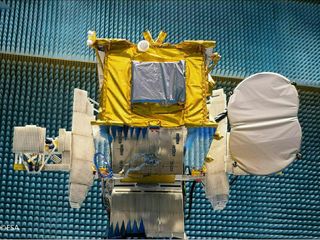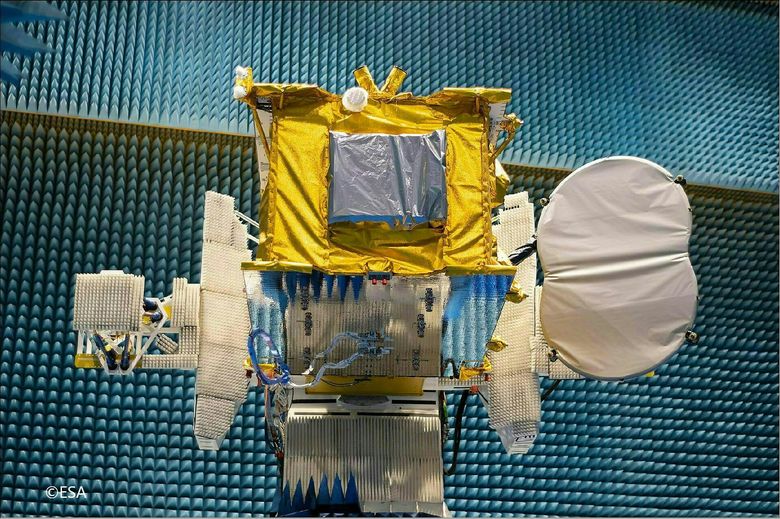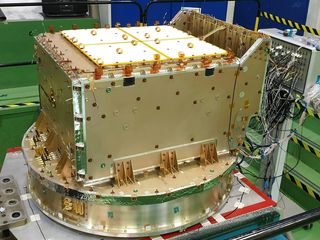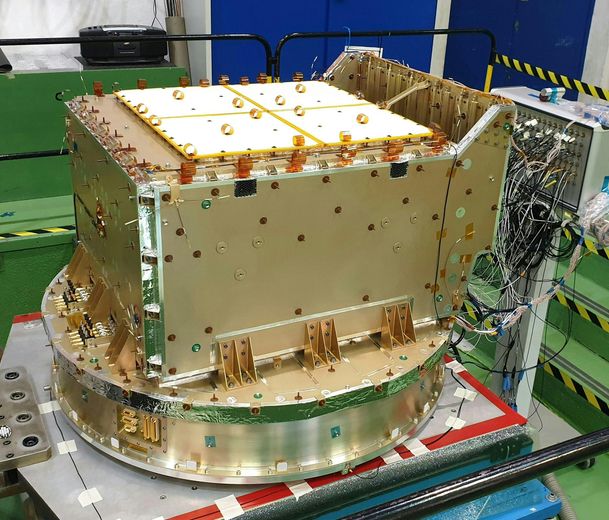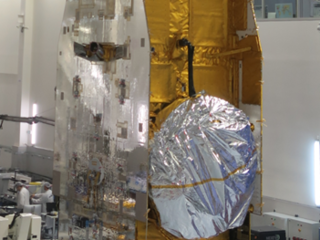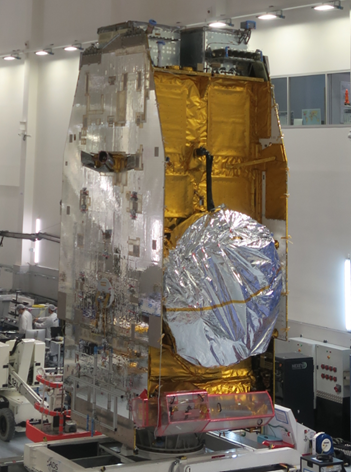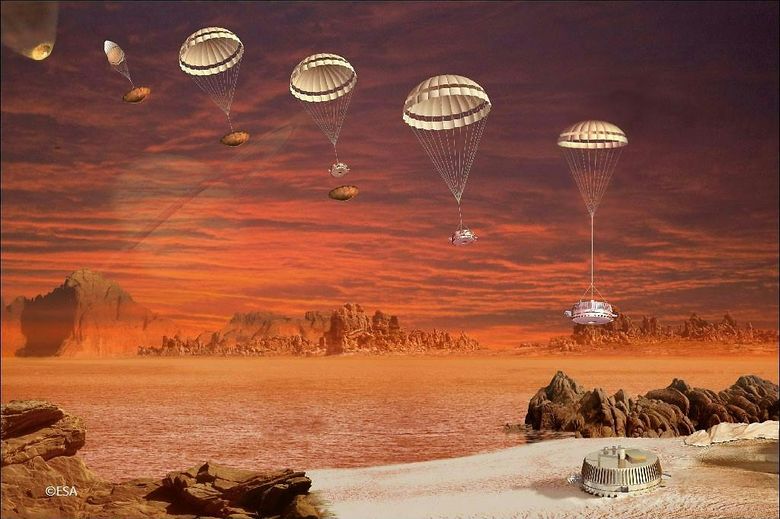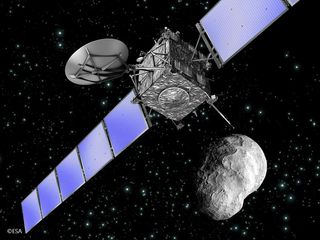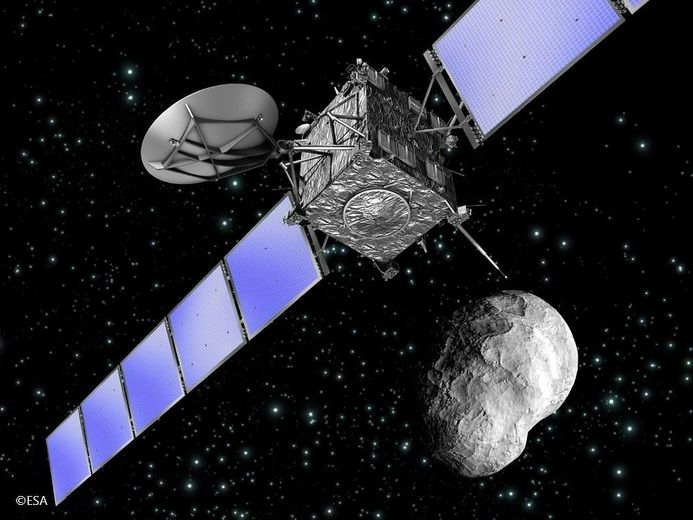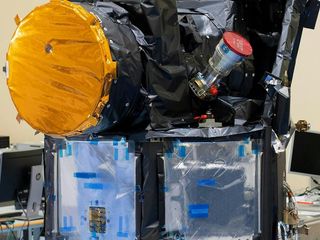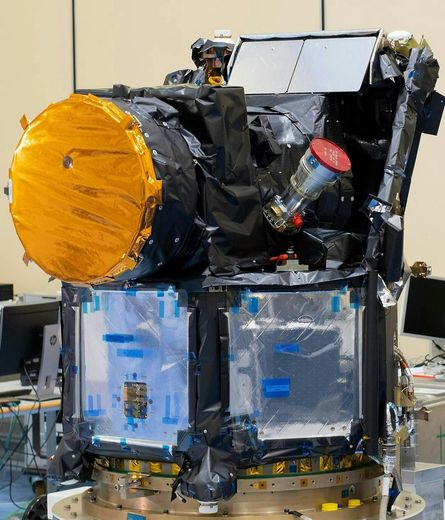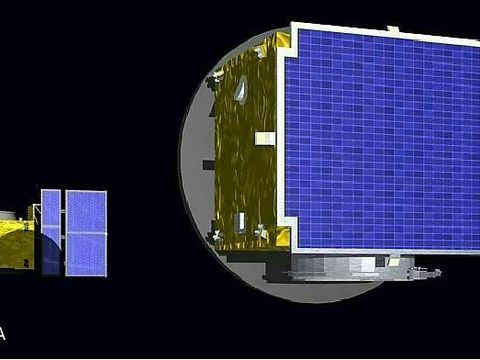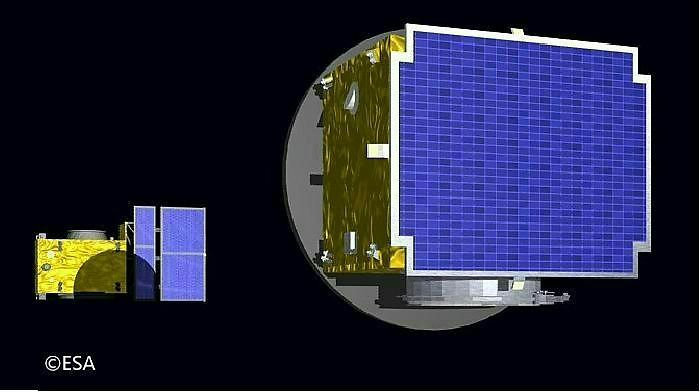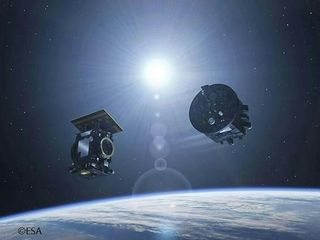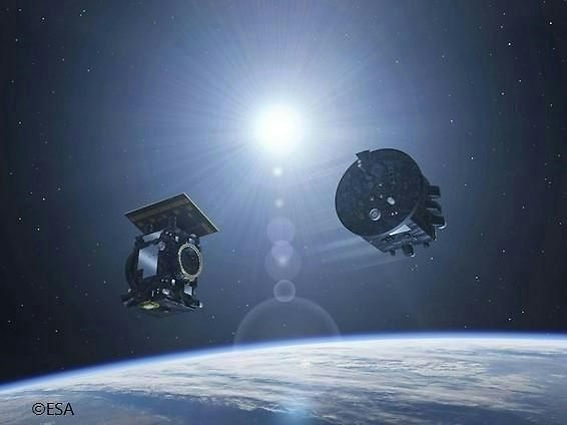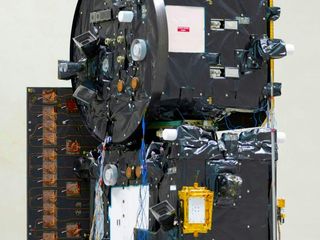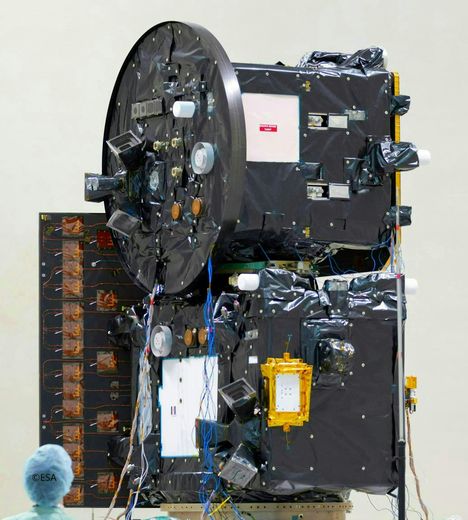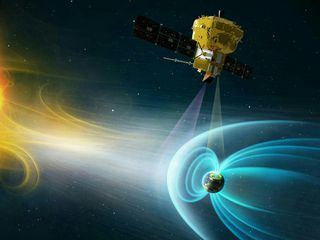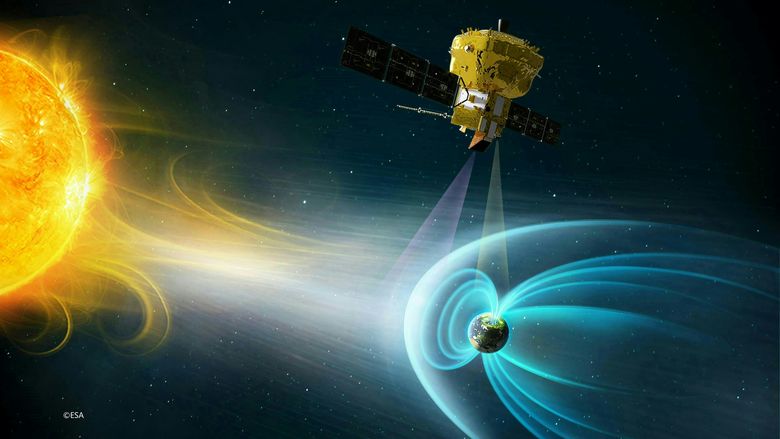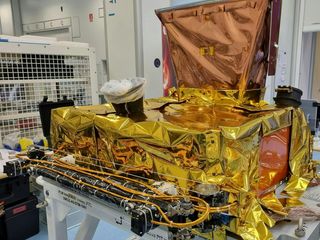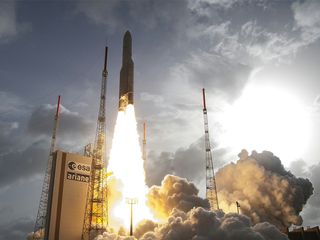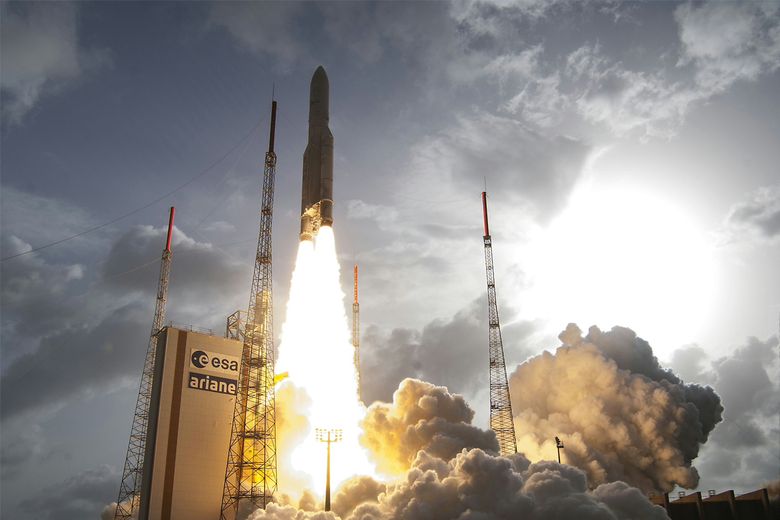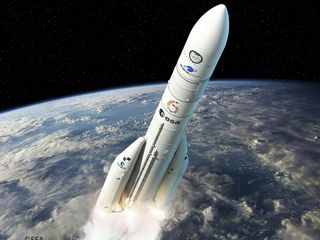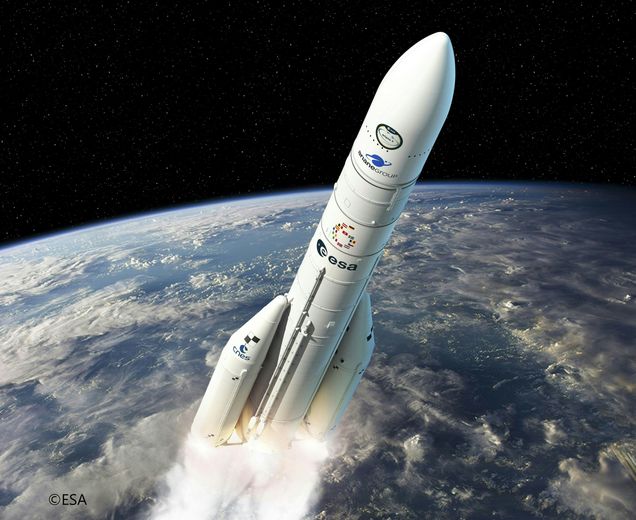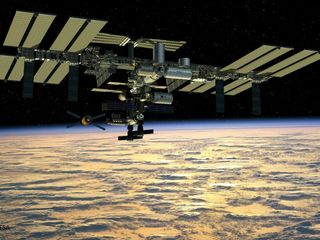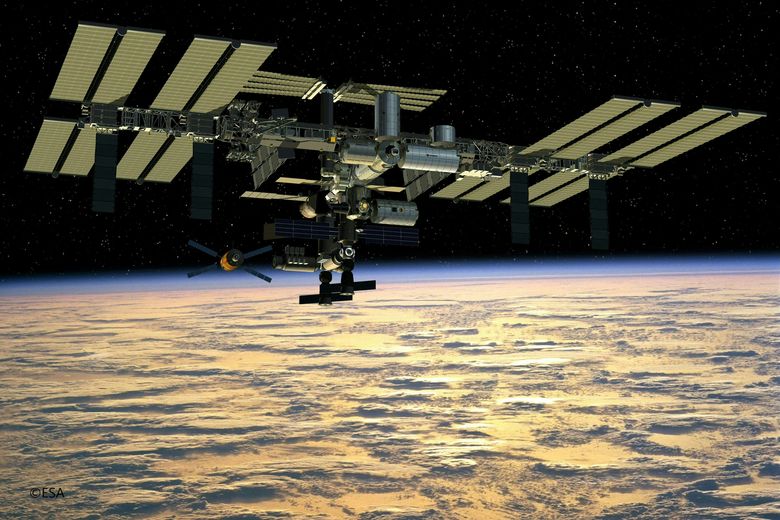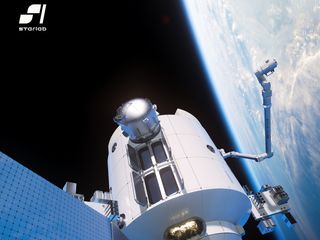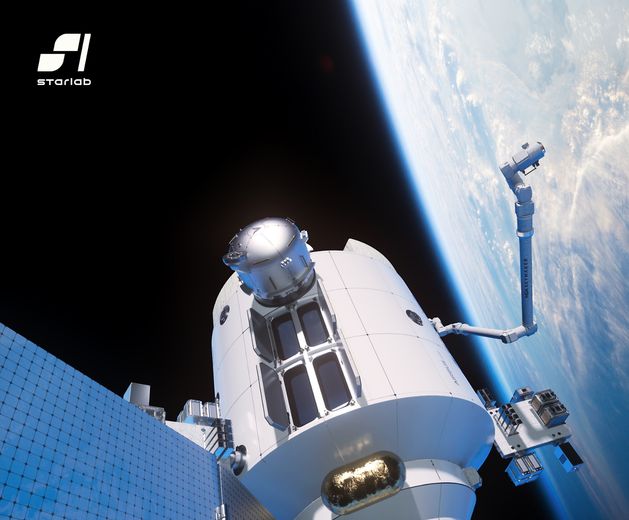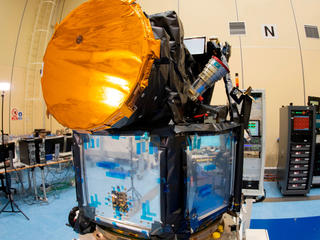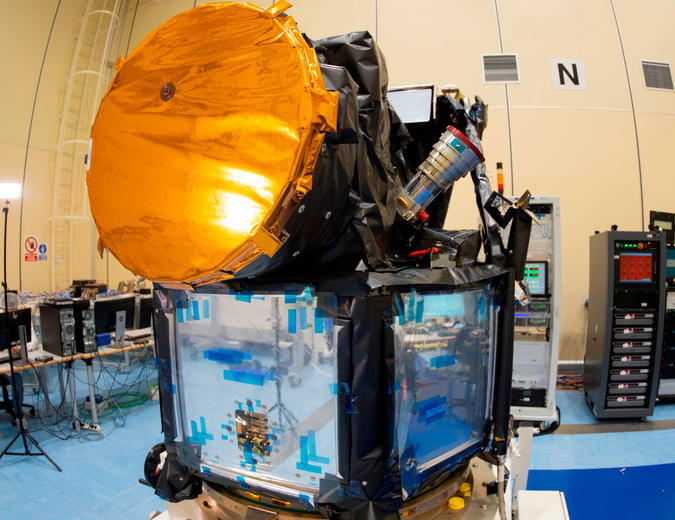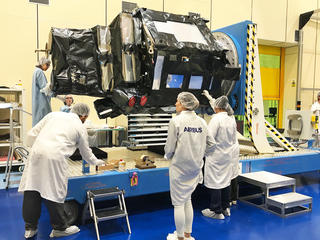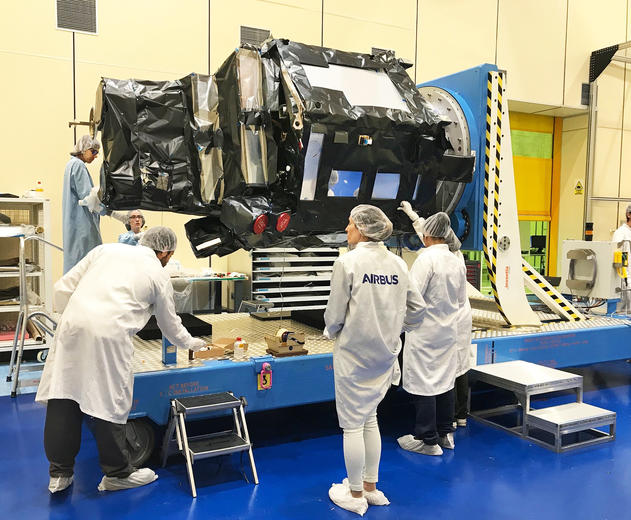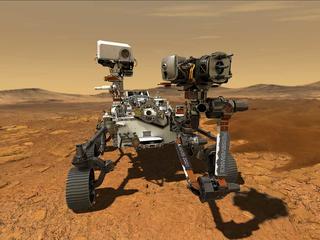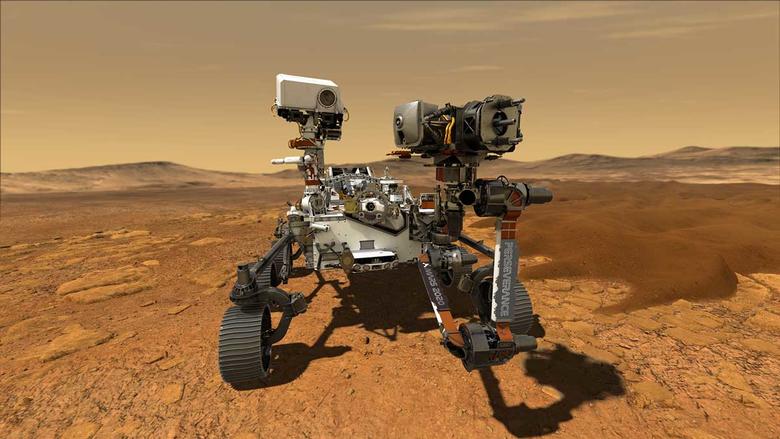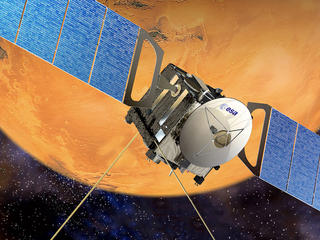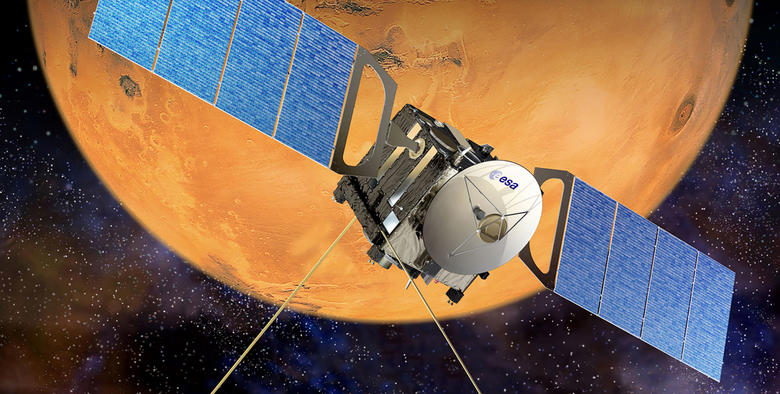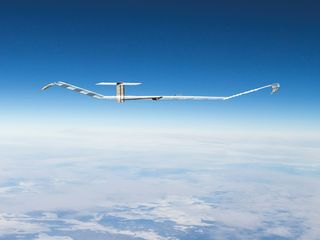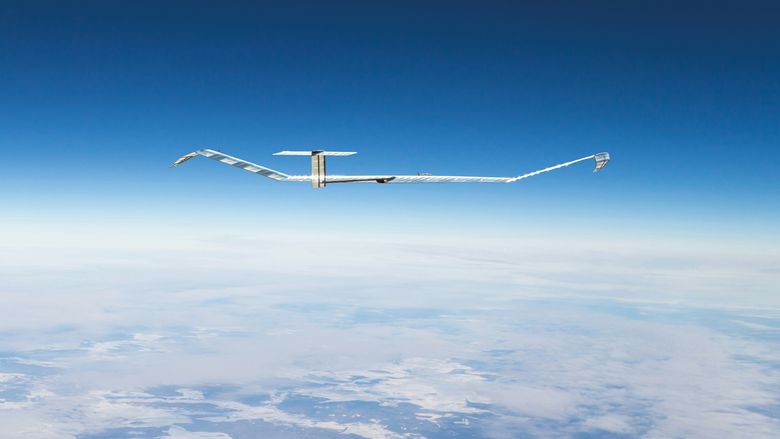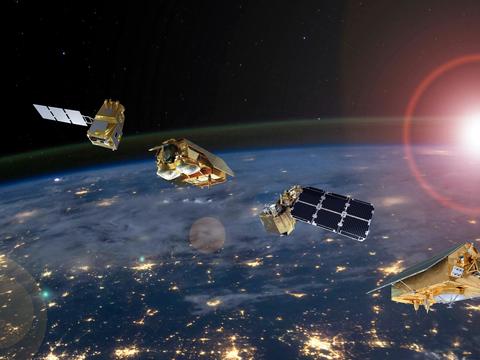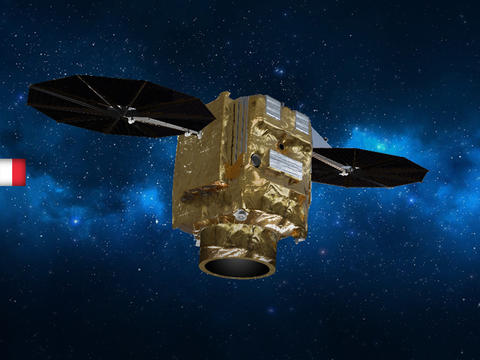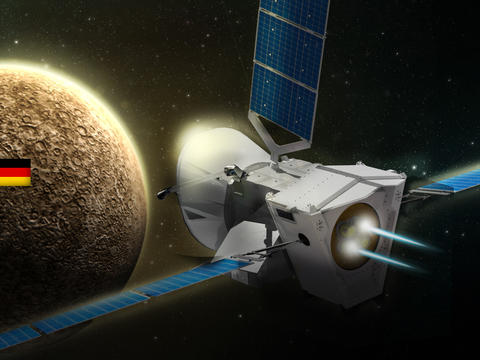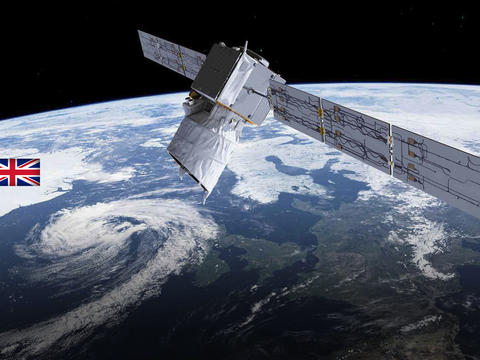More than half a century as pioneers in Space
Spain began participating in space projects in 1966. Since then, Airbus has come a long way and has the necessary competencies to lead the Spanish space sector.
In all this time, Airbus has been present in all the major milestones that have shaped space in Spain. We have paved the way in satellites and started work on launchers. We are pioneers in the use of carbon fiber and a centre of excellence in composite materials. We were also the first to make the leap into systems work, being the only Spanish company with the necessary capabilities for the development and construction of large satellites.
The potential developed thanks to the dedication and high qualification of our teams has made Airbus the reference company in cutting-edge space technologies in Spain. This leadership entails the commitment to be a driving force in the space sector that generates work and technological wealth, both for other companies and for universities and research institutions.
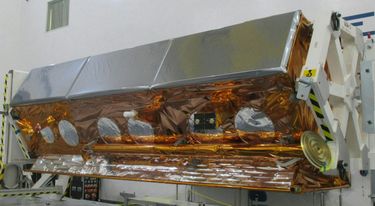
Observing
Earth observation is one of Airbus' strengths in Spain. Right now Airbus is the prime contractor for ESA's Copernicus environmental mission called LSTM (Land Surface Temperature Monitoring) which aims to provide global measurements of the Earth's surface temperature at high space and diurnal velocity to make agricultural production on farms more sustainable.
LSTM is the first Copernicus mission awarded to a Spanish company. Being selected to lead this mission is an important milestone for Spain and again demonstrates ESA's confidence in Airbus as a reliable partner for ESA's major missions. The industrial consortium is composed of more than 45 companies and institutions from up to 18 different countries.
Moreover, within the European Copernicus program, Airbus has participated in the climate observation and control missions: Sentinel-1, being responsible for the thermal control of the satellite, Sentinel-2, being responsible for the satellite structure and Sentinel-3, being responsible for the payload radiometer, showing the European leadership in this type of radiometric instruments.
PAZ, the Spanish radar satellite launched in 2018, is also for observation purposes. It has a Spanish technology radar which produces high-resolution images, allowinºg the capture both day and night, and even through clouds. It is 5 meters tall and weighs 1,400 kg. Airbus led a consortium of 15 companies and 3 universities for its realisation.
The development of the Spanish optical observation satellite INGENIO was also led by Airbus, which selected a group of 10 Spanish companies to carry out its design and construction. It had two high resolution cameras, one in panchromatic band and 4 multispectral bands. It was launched at the end of 2020, but a failure in the launcher prevented its commissioning. The successful development and qualification of the satellite established the capacity of Airbus and the Spanish space industry for these highly complex Earth observation missions.
Airbus was also instrumental in the design and manufacturing of the composite structures of the Meteosat MTG satellites and of the high thermo-elastic stability structures of the Meteosat MTG instruments for meteorological control.
In addition, Airbus in Spain has contributed with instruments and payloads to other missions such as: the MIRAS radiometer for the SMOS mission, the Sentinel-3 microwave radiometer, and the SCA antenna and ICI radiometer for the MetOp-SG mission.
Satellite secure communications
On the other hand, telecommunications satellites also benefit from Airbus' technical expertise in Spain. More than 150 telecommunications satellites incorporate the company's reflector antennas, electronic units, structures, harnesses, thermal control and mechanisms. The active antenna that Airbus developed in Spain was a scoop in the European commercial communications area. This was the ELSA+ antenna created for Eutelsat's Quantum satellite, which can be electronically reconfigured in orbit, with beam-hopping capability, offering the operator maximum flexibility to control the radio frequency beams in the coverage area with commands from ground.
Airbus in Spain is a world reference in secure communications for governmental use, since more than twenty years ago with the development of the first IRMA active antenna for the Spainsat mission. With successive developments and products in orbit, it has gone a step further by developing the most technologically advanced payloads for satellites, the Spainsat NG I and II, which represent the largest space programme ever launched in Spain. The Governmental operator Hisdesat has contracted Airbus to lead the construction of two satellites.
Airbus in Spain is designing and building the X-band payload which uses active transmit and receive antennas with in-orbit reconfiguration capability, offering greater flexibility thanks to the electronic reorientation of the beams depending on the coverage needs at any given moment. The antenna is also capable of anti-jamming, or diverting from intentional interference.
The first satellite will be launched early 2025 with a Falcon-heavy launcher.
Based on the Spainsat NG antennas, Airbus has won the contract to develop the active antennas for the German secure communications satellite ADLER.
Exploring
In Science and Exploration, the contribution of Airbus in Spain has been prolific and highly motivating, being involved in missions to Mercury, Jupiter, Saturn, Venus and Mars.
For example, Airbus Spain manufactured the structure of the Huygens probe that, in January 2005, descended into the atmosphere of Titan, Saturn's largest moon, discovering for the first time an extraterrestrial world full of methane. After releasing its re-entry shield, it made a number of measurements and images during its descent and landed on the surface with the help of a parachute.
Other adventures such as: chasing a comet (Rosetta), mapping one billion seven hundred million stars in the Milky Way (GAIA), or going to Mercury at a reduced speed to avoid being absorbed by the gravitational pull of the Sun (BepiColombo) have been an incredible technological experience and an effort that has been richly rewarded.
Airbus in Spain has also played a key role in the CHEOPS mission known as the exoplanet hunter. CHEOPS is the first ESA satellite won by Spain. It was launched into space in December 2019 with its telescope that characterises planets in nearby stars with high-precision photogrammetry. The satellite was designed and built in Madrid by a consortium of up to 24 companies from 11 European countries led by Airbus Spain. Its results are of great value to the scientific community.
In the scientific field, Airbus has participated in ESA´s technological mission Proba-3 for the study of the solar corona, being responsible for the design, manufacturing and integration of the platforms of the two satellites -occulter and coronagraph- and carrying out the environmental, mechanical and thermal tests of the complete spacecraft. Flying in formation, these two satellites will observe the solar corona during eclipses caused by the occulter satellite. This mission will be launched into orbit at the end of 2024 by the PSLV launcher.
For the first time, ESA is working in collaboration with the Chinese Academy of Sciences on the SMILE mission to study the perturbations of the Earth's magnetic field due to the solar wind. Airbus is playing a key role in this mission by being the prime contractor for the intelligent payload that houses all the scientific instruments. The Chinese platform and payload will be integrated at ESA's facilities in Europe. The launch with the VEGA-C rocket is planned for late 2025 /early 2026, when the prediction of the interaction of the solar flux with the magnetosphere is more intense.
Launchers
For satellites to be useful to us, they have to be put into orbit. This requires a very powerful transport that can take them out of the atmosphere by overcoming the gravitational pull of the Earth. In order to defy this attraction and reach its orbit, it is necessary to reach a speed of 7.2 km/sec.
For years, the European launcher, Ariane 5, put two 5.5 ton satellites into orbit at each launch. The large structures that made up the upper stage of the launcher were produced in Airbus Madrid. For each flight, up to five structures were built in Spain, using the most advanced carbon fiber technology.
Ariane 5 did its last flight in July 2023 and was replaced by Ariane 6, whose maiden flight took place in July 2024. Airbus in Spain continues to build the upper stage structures, from the new state-of-the-art 4.0 facility in Getafe (Madrid), with a Pulse Line manufacturing and assembly facility. In addition, Airbus in Spain also produces elements for American and Japanese launchers (Falcon-9, H2A).
Once in space, we encounter the International Space Station (ISS). The ISS is our science laboratory in space. Experiments are conducted there to advance major scientific discoveries of great utility for our planet, such as: human physiology, life sciences, space medicine, materials science, liquid and solid state physics and plasma research. In the European Columbus laboratory alone, built by Airbus, more than 1,800 experiments have been carried out. Airbus in Spain has contributed to the construction of the five European ATV space freighters (electronic structures and units) that carried materials and supplies to the ISS.
The ISS also has windows for astronauts to make observations of the Earth and to control the installation of new elements on the station with the robotic arm. Nodes 1 and 3 of the station have seven windows that must be protected from any micrometeorite impact. Airbus in Spain supplied the covers that protect these windows, which open and close from the inside using special watertight mechanisms.
Airbus is developing the Starlab module to continue the activities of the ISS, which will reach the end of its life in 2030. With a length and diameter of 8 meters, Starlab will be able to accommodate between four and eight astronauts on its three floors to ensure seamless continuity of the research currently being conducted in orbit.
Educating
Airbus' commitment in Spain is not limited to exploiting the benefits of space to improve life on Earth, but goes beyond that. A task that is considered essential is the dissemination of space knowledge to the younger generations to promote a love of science and space.
Airbus encourages its employees during Space Week to give presentations at schools, colleges, universities, institutes or associations to explain what space activities are, what benefits they bring and to convey their enthusiasm for working in this industry. These talks, workshops and conferences inspire young people not only to look at space but also to take an interest in science. Given the great demand in schools, Airbus in Spain does not limit itself to that specific week and helps its ambassadors from all schools in Spain to go out throughout the year, so that their message reaches more than five thousand young people.
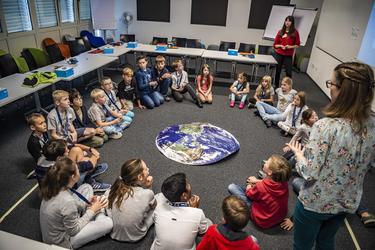
Airbus Space in Spain
With an eye on Getafe
For years, Barajas hosted Airbus' main space activities in Spain. This is where the two Spanish Earth observation satellites (PAZ and Ingenio) and also the first ESA satellite led by Spain (the exoplanet hunter CHEOPS) were built. Airbus in Spain has proven to be a reliable partner for ESA in all fields: Earth observation, telecommunications, science and exploration, orbital infrastructure and launchers.
It is the only company in the sector with the capacity to design and build large satellites as prime contractor. Its manufacturing, assembly, testing, integration and verification facilities in a clean area are unique in Spain. Its organisation is fully qualified to lead large programmes of the ESA, the Spanish Space Agency and the Ministry of Defense through Hisdesat.
Participation in the Ariane programme includes large carbon fiber structures made in a single piece. The transition from Ariane 5 to Ariane 6 has required the construction of new, state-of-the-art 4.0 facilities at the Getafe plant, with a Pulsed Line for the manufacture and assembly of Ariane 6 (22,000 m2).
The satellite integration area, with 14,000 m2, is one of the largest in Europe. It has integrated the SMILE payload module, the latest generation active antennas for Spainsat NG, and is working on the antennas for the Metop SG and Galileo wind scatterometer, among other projects.
When you think big, you think Airbus.
With our eyes on Tres Cantos
The Airbus Tres Cantos Centre is located 25 km north of Madrid. It specializes in designing and manufacturing electronic equipment for satellites, launchers, orbital infrastructure and space transportation vehicles.
Spain is on Mars thanks to Airbus' Tres Cantos and Barajas centres. Tres Cantos developed the REMS weather station for NASA's Curiosity rover. It also contributed to the Perseverance rover of the Mars 2020 mission with another weather station (MEDA).
Key elements for the Artemis lunar exploration programme are being developed in Tres Cantos. Among them, the Thermal Control Unit of the European Service Module of the Orion spacecraft. Likewise, the energy management subsystems of the HALO and I-HAB modules of Gateway, the future lunar station, are designed and manufactured at the Tres Cantos facilities.
For 40 years, it has been developing state-of-the-art electronics that are on board the Copernicus programme satellites, on more than 100 telecommunications satellites and on many of the European science and exploration missions, such as JUICE and Bepi-Colombo, which are travelling towards Jupiter and Mercury.
Ariane has been a reference programme since the creation of the Tres Cantos Centre. Starting with the development of sequential electronics for Ariane 5, the centre has been present in all European institutional launchers, Ariane and VEGA families, contributing to Europe's independent access to space.
With an eye on Barcelona
The Connected Intelligence business in Spain is headquartered in Barcelona, with the subsidiary Airbus GeoTech. This entity provides digital geospatial services.
This team develops complete geo-information solutions, with R&D, engineering, production and customer support teams.
Airbus GeoTech is a world leader in HAPS (High Altitude Platform Station) earth observation technology in the stratosphere, having developed and operated StratObserver, the most advanced optical system for the stratosphere, with its 18cm resolution. StratObserver has demonstrated - aboard Zephyr, manufactured by Airbus subsidiary AALTO - the ability to operate without interruption for more than 180 days, providing real-time video. StratObserver is also compatible with other types of HAPS, such as balloons and airships.
Airbus GeoTech also performs 2D and 3D mapping, including topographic maps for the civil and military markets, urban mapping, aeronautical mapping of airports and generation of terrain obstacle databases. Other activities such as cartographic and Geographic Information Systems consulting projects, as well as geospatial software development are also carried out from this centre.
Airbus GeoTech is also a provider of satellite imagery for Airbus satellite constellations, such as Pléiades Neo and its derivative products.
Airbus GeoTech provides its services to both national and international customers, one of its main customers being EU SatCen, the European Union Satellite Center.
